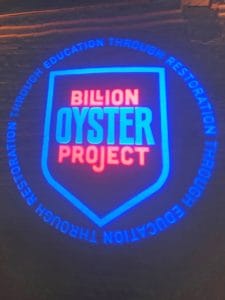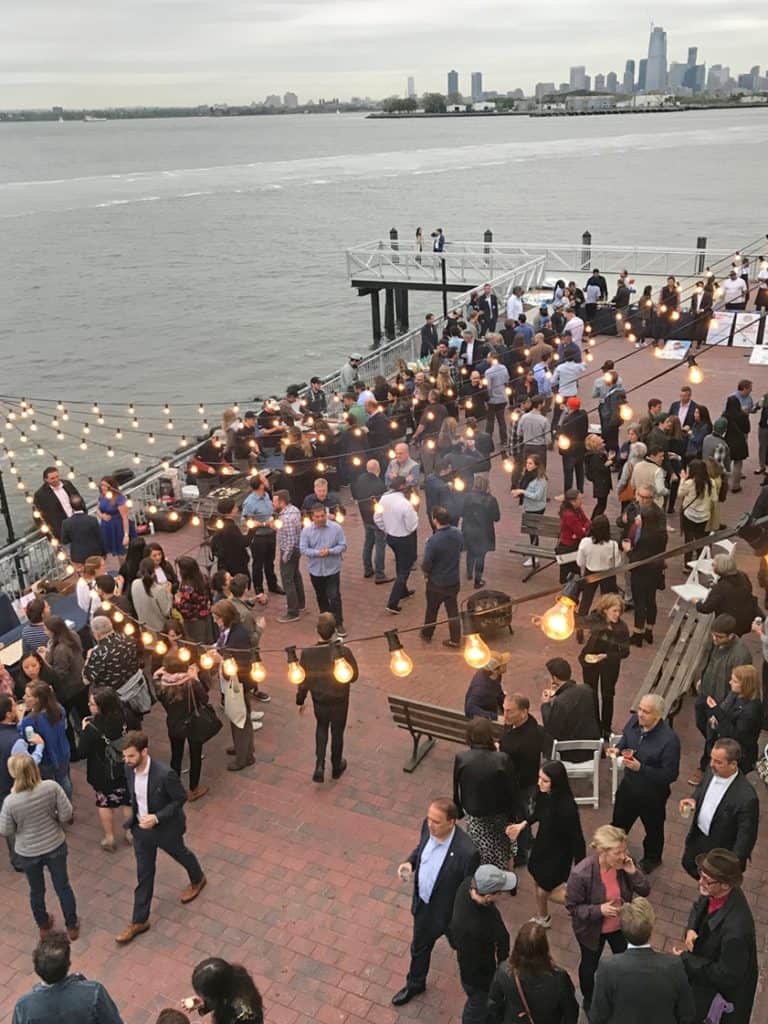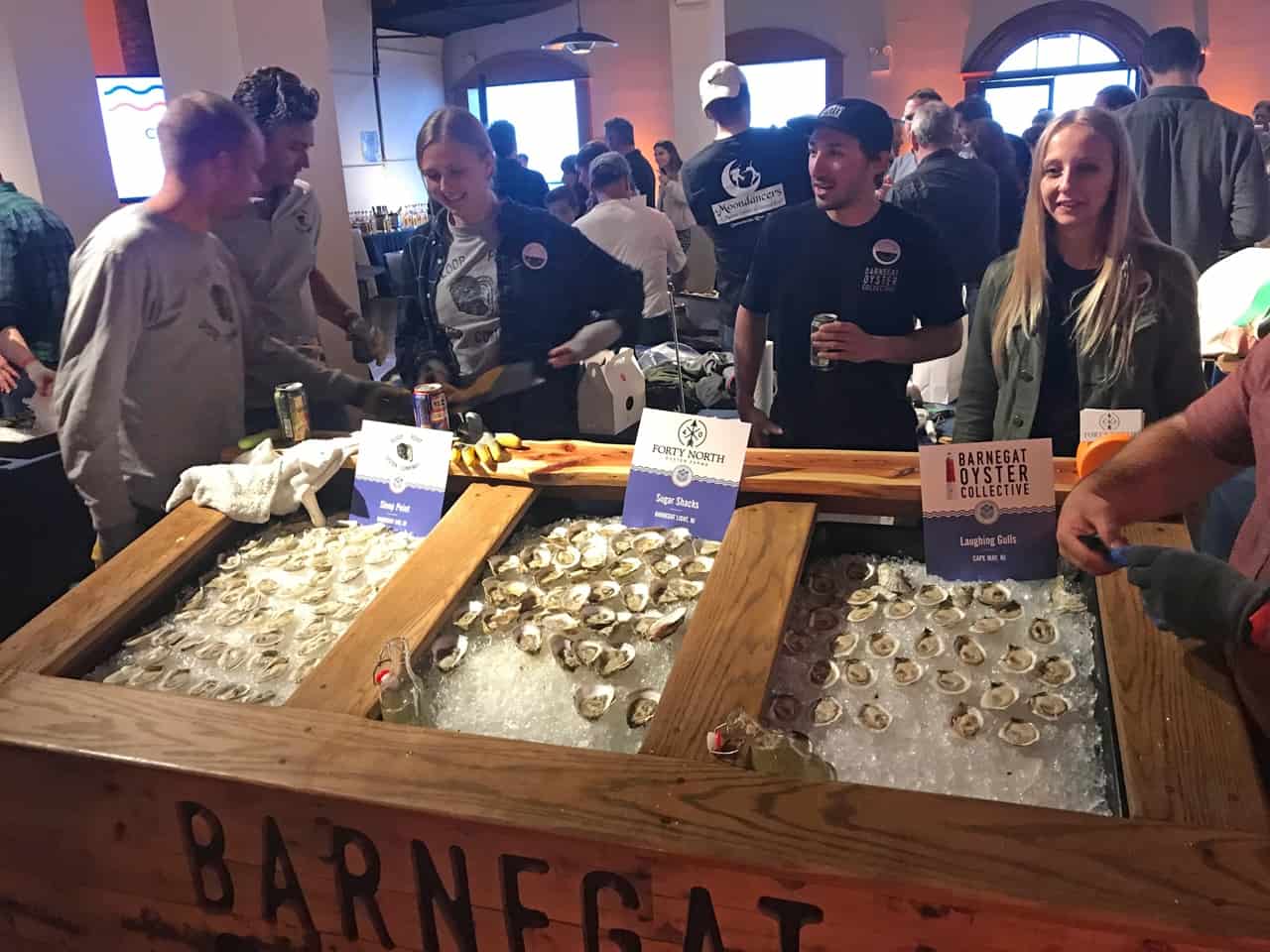“Lost World: UN Report Shows Nature on Death’s Door” was released at the May 2019 Biodiversity Summit in Paris. This 1800-page document carried the lede “Human activity is trashing the planet, pushing hundreds of thousands of species to the brink.”
 I’m an environmentalist and received coastal stewardship training and certification with Rutgers University. This led to my volunteer work with a movement launched by two educators at the Harbor School on Governors Island, Murray Fisher and Peter Malinowski, to save New York Harbor.
I’m an environmentalist and received coastal stewardship training and certification with Rutgers University. This led to my volunteer work with a movement launched by two educators at the Harbor School on Governors Island, Murray Fisher and Peter Malinowski, to save New York Harbor.
This waterway, part of the Hudson-Raritan Estuary, was on death’s doorstep. Once an ecological wonder brimming with marine life and celebrated as the Oyster Capital of the World in Mark Kurlansky’s book The Big Oyster: History on the Half Shell, it had become an ecological dead zone.
In 2014 Fisher and Malinowski created the Billion Oyster Project (BOP) as a 501(c)(3) nonprofit organization. They applied for and received a five-million-dollar grant from the National Science Foundation. They had initial funding to launch this citizen-science initiative. Now the real work would begin.
Their back-to-the-future goal was to reintroduce creatures whose origins dated back over 100 million years to restore this fragile waterway. Oysters are a keystone species that perform a wonderful sort of environmental alchemy: they convert polluted water into purified habitat. In fact, they have been called the kidneys of our estuaries. An adult oyster can filter 50 gallons of water a day. BOP calculated that a billion oysters – populating over 100 reefs – could clean and recycle New York Harbor every 72 hours by 2035.
The good news for this initiative was the enactment of the Federal Clean Water Act of 1972 that legislated all waters in the United States would be fishable and swimmable by 1983. Further, there would be “zero discharge” of pollutants in our waterways by 1985. However, in 2018 over 27 billion gallons of untreated wastewater fouled New York Harbor. How could that happen? Poor planning and underinvestment in sewage treatment systems resulted in alarming discharges of contaminated water triggered by storm and rain runoffs.
BOP faced serious barriers to success beyond raw sewage runoff. Oysters were susceptible to two diseases, MSX and Dermo, that could devastate entire reef populations. The BOP team needed to grow and release disease-resistant oysters that would adapt, thrive and reproduce on resilient reefs. They required millions of oyster shells to provide substrate for baby oysters to attach to. Community involvement and an active volunteer program were essential pillars to support program success. Finally, they needed a continuous stream of funding to make the project viable for long term sustainability.
The results to date are positive. Over 30 million oysters have been restored. More than one million pounds of oyster shells have been donated by over 80 participating restaurants. An environmental army of thousands of middle school and high school students from urban backgrounds have been trained to acquire maritime skills to grow oysters, build oyster reef infrastructure, scuba dive, operate vessels, and conduct research.
Fisher and Malinowski’s plan to restore New York Harbor by unleashing an ancient species of pollution-gobbling superheroes had been launched, but could it actually succeed? Would history record them as ecosystem visionaries or practitioners of environmental sorcery?
Perhaps, they have already won. You see they stumbled onto a discovery bordering on an epiphany. Their environmental project paled in contrast to the movement they created. Children put down their smartphones and adults traded in briefcases for pliers to build oyster cages on Governors Island. Restaurants mobilized and donated oyster shells for reef restoration. Generational cohorts drawn from Baby Boomers, Generation X, Generation Y Millennials and Generation Z Centennials became environmental stewards forever linked to restoring New York Harbor.

Fisher and Malinowski recently announcevd a goal to teach one million students in the metropolitan area on the benefits and steps needed to restore New York Harbor. This is a celebration of hope over cynicism. It’s a bridge to tomorrow connected to the prehistoric past.
To commemorate this “Back to the Future” citizen-science initiative, they hosted their fifth annual Billion Oyster Party on May 9 at The Liberty Warehouse on Pier 41 in the historic Red Hook section of Brooklyn. This sold-out event attracted 1500 oyster revelers and raised over $370,000. Oyster farms from California, New York, New Jersey, Rhode Island, Connecticut, Massachusetts, Maine and other aquaculture farming areas shucked over 25,000 succulent oysters paired with beer, wine, tequila, vodka and a wonderful assortment of beverages. An array of sponsors including Bloomberg Philanthropy, Goldman Sachs, Bank of America, Open Table, Tito’s Vodka, Bluepoint Brewing Company, and others united to support this cause.
New York Harbor, once on death’s doorstep, is now a feel-good story of community mobilization to restore it.
Richard Dodd is a freelance writer and environmentalist. His op-ed piece “Rage of the Ashes” was featured in Susan Shapiro’s best seller “The Byline Bible.” His critically acclaimed debut novel Betrayal by Blood and Demons – written under the pen name Ian McBride – is rated 5 STARS on Amazon. He is from Princeton, NJ, and volunteers with the Waterfront Alliance, Billion Oyster Project and leads tours at the 9/11 Memorial Site.










